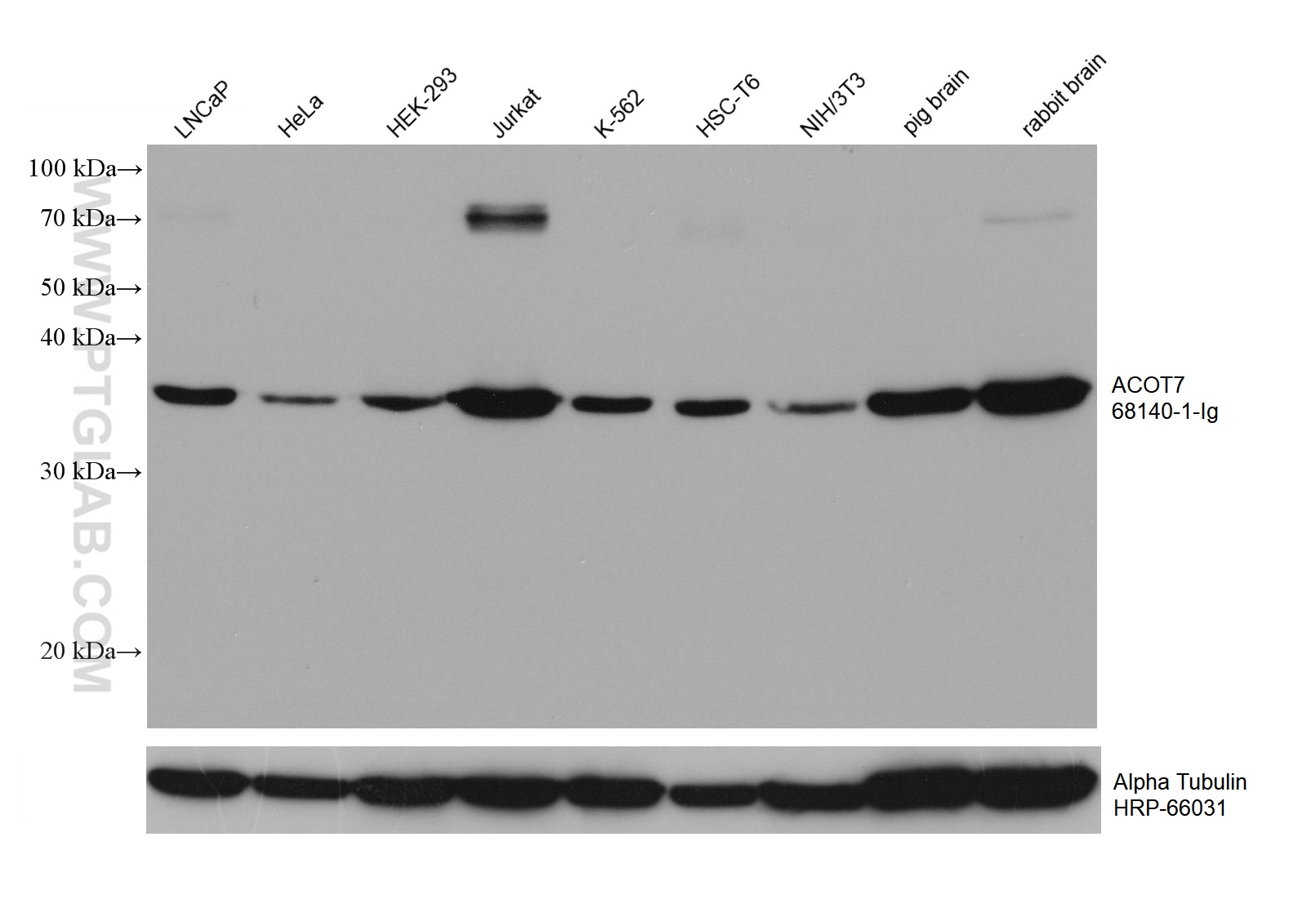验证数据展示
产品信息
68140-1-PBS targets ACOT7 in WB, Indirect ELISA applications and shows reactivity with Human, Rat, Mouse, Rabbit, Pig samples.
| 经测试应用 | WB, Indirect ELISA Application Description |
| 经测试反应性 | Human, Rat, Mouse, Rabbit, Pig |
| 免疫原 | ACOT7 fusion protein Ag8975 种属同源性预测 |
| 宿主/亚型 | Mouse / IgG2a |
| 抗体类别 | Monoclonal |
| 产品类型 | Antibody |
| 全称 | acyl-CoA thioesterase 7 |
| 别名 | ACH1, ACOT7, ACT, acyl CoA thioesterase 7, BACH, Brain acyl CoA hydrolase, CTE II, CTE IIa, hBACH, LACH, LACH1 |
| 计算分子量 | 370 aa, 40 kDa |
| 观测分子量 | 37 kDa |
| GenBank蛋白编号 | BC017365 |
| 基因名称 | ACOT7 |
| Gene ID (NCBI) | 11332 |
| 偶联类型 | Unconjugated |
| 形式 | Liquid |
| 纯化方式 | Protein A purification |
| UNIPROT ID | O00154 |
| 储存缓冲液 | PBS only , pH 7.3 |
| 储存条件 | Store at -80°C. The product is shipped with ice packs. Upon receipt, store it immediately at -80°C |
背景介绍
Acyl-CoA thioesterases (ACOTs) are enzymes that catalyze hydrolysis of fatty acyl-CoAs to free fatty acids and CoA-SH. ACOTs are expressed ubiquitously in prokaryotes and eukaryotes (PMID: 11755680). ACOT7 also known as BACH, CTE-II, ACT, ACH1, BACHa, is one of the most extensively studied ACOTs as a major isoform of the ACOT family (PMID: 17563367). The enzyme is localized to the cytosol and is highly expressed in brain tissue and testis tissue, showing a preference for long-chain acyl-CoA substrates with fatty acid chains of 8-16 carbon atoms (C8-C16) (PMID: 28518146). It has been identified that ACOT7 plays a role in neurotoxic prevention and is a candidate drug target in inflammatory disease (PMID: 17563367, 23459938, 10509865). ACOT7 has 7 isoforms as molecular between 27-40 kDa, it may also form dimer (~70 kDa) (PMID: 20470824).
